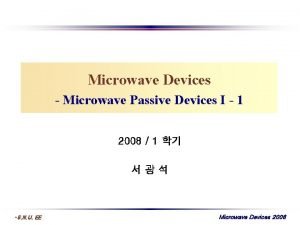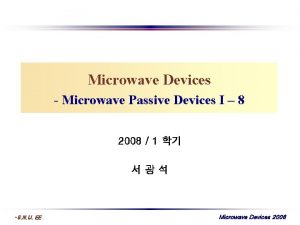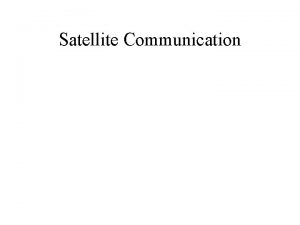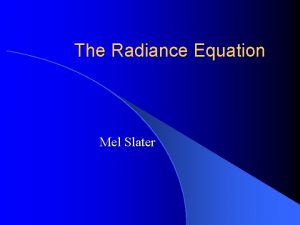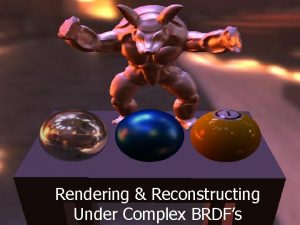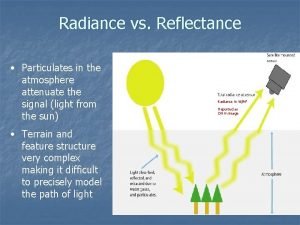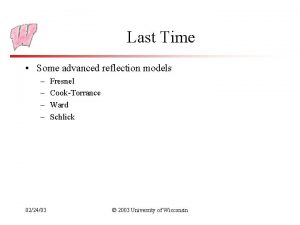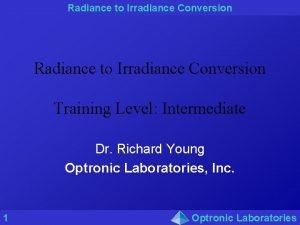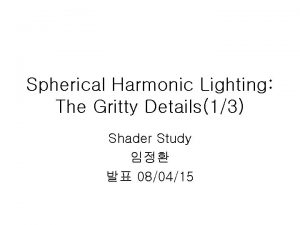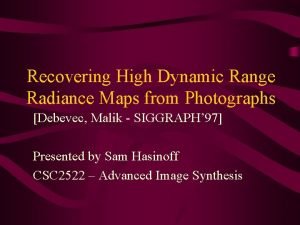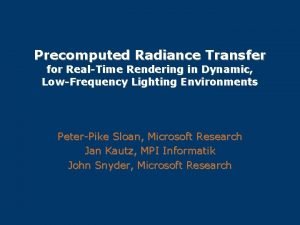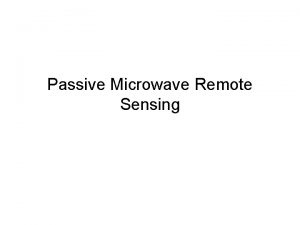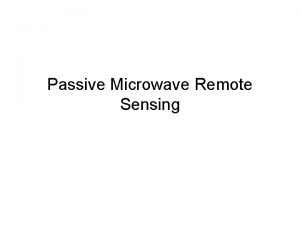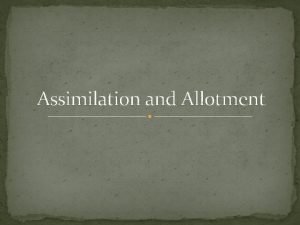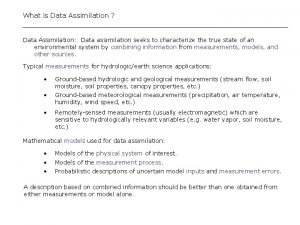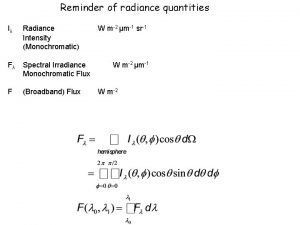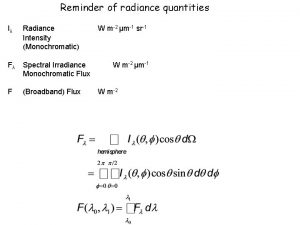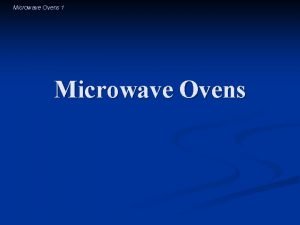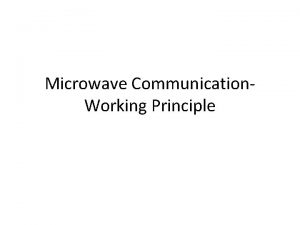Towards Passive Microwave Radiance Assimilation of Clouds and






![MSG SEVIRI Comparison Results Channel RMSE [K] Bias [K] 6. 2 m 1. 93 MSG SEVIRI Comparison Results Channel RMSE [K] Bias [K] 6. 2 m 1. 93](https://slidetodoc.com/presentation_image_h2/45f8b7a2e4c95f216b0deee13b829a25/image-7.jpg)





- Slides: 12

Towards Passive Microwave Radiance Assimilation of Clouds and Precipitation Ralf Bennartz 1, Tom Greenwald 2, Andrew Heidinger 3, Chris O’Dell 1, Martin Stengel 1, Kenneth Campana 4, Peter Bauer 5 1: Atmos. & Oceanic Sci. , University of Wisconsin 2: CIMSS, University of Wisconsin 3: NOAA/NESDIS 4: NOAA/NCEP 5: ECMWF

Outline Ø SOI model and applications Ø Cloud/precipitation overlap Ø 3 -year accomplishments Ø Further plans

SOI Radiative Transfer Model • Hybrid multi-stream solution method (doubling plus iteration) (Heidinger et al. 2006; O’Dell et al. 2006) • Implementation - Less scattering: 2 -stream solution - More scattering: 4 -stream solution • Forward, tangent linear and adjoint models integrated into CRTM

Accuracy of Results (Eddington and SOI versus Monte-Carlo model)

Forward and adjoint simulation example GFS Simulations AMSR-E Observations

Infrared Applications: MSG SEVIRI
![MSG SEVIRI Comparison Results Channel RMSE K Bias K 6 2 m 1 93 MSG SEVIRI Comparison Results Channel RMSE [K] Bias [K] 6. 2 m 1. 93](https://slidetodoc.com/presentation_image_h2/45f8b7a2e4c95f216b0deee13b829a25/image-7.jpg)
MSG SEVIRI Comparison Results Channel RMSE [K] Bias [K] 6. 2 m 1. 93 0. 22 7. 3 m 1. 91 -1. 25 8. 7 m 1. 54 1. 17 10. 8 m 1. 38 0. 73 12. 0 m 1. 37 0. 64 13. 4 m 1. 37 1. 06

Different cloud/precipitation overlap models • Conventional approach uses cloud cover to subdivide NWP pixel in cloudy/precipitation • New approach derives two or three optimal columns based on subscale distribution of precipitation columns with similar optical properties • Numerically efficient (2 -3 radiative transfer calculations per NWP grid point) • Highly accurate against independent column/Max-Random-overlap reference • Optimal approach reduces errors due to cloud overlap from maximum values of 5 -10 K to values < 1 K

Different cloud/precipitation overlap models 1 Column Currently operational at ECMWF 2 Columns 3 columns 3 optimal O’Dell, Bauer, Bennartz, JAS, 2006, submitted

Different cloud/precipitation overlap models 1 Column Currently operational at ECMWF 2 Columns 3 columns New scheme with much better error characteristics 3 optimal O’Dell, Bauer, Bennartz, JAS, 2006, submitted

3 -year Accomplishments • Fast forward RT model (SOI) developed, tested and integrated in CRTM (3 publications) • Tangent linear and adjoint model developed, tested, and integrated in CRTM • Bias GFS/SOI statistics for passive microwave and infrared • Fast and accurate new cloud overlap scheme for use in NWP radiance assimilation (forward/adjoint); manuscript submitted

Further plans • Monitor bias statistics over longer time period, especially: – Fully include scattering (need more complete GFS input data) – Biases in IR including scattering • Precipitation assimilation: – Include cloud diagnostics to generate precipitation rate – Further test and integrate cloud overlap with NCEP/GFS.
 Active and passive microwave devices
Active and passive microwave devices Microwave passive devices
Microwave passive devices Passive microwave repeater
Passive microwave repeater Radiance equation
Radiance equation Total radiance
Total radiance Radiance vs reflectance
Radiance vs reflectance Total radiance
Total radiance Radiance to irradiance conversion
Radiance to irradiance conversion Spherical harmonics lighting
Spherical harmonics lighting Radiance map
Radiance map Precomputed radiance transfer
Precomputed radiance transfer 4 parts of digestive system
4 parts of digestive system Absorption and assimilation
Absorption and assimilation
